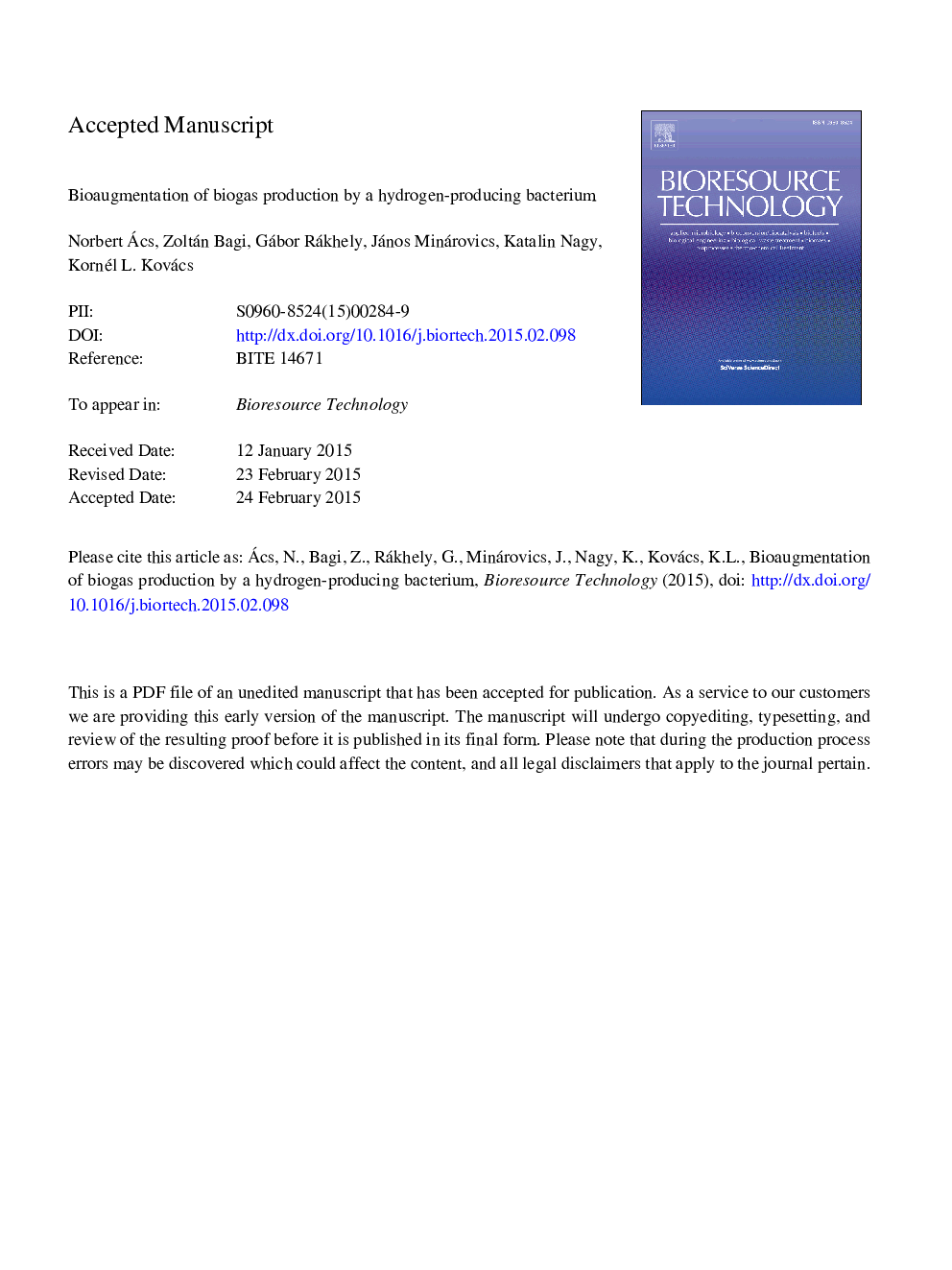| Article ID | Journal | Published Year | Pages | File Type |
|---|---|---|---|---|
| 7075011 | Bioresource Technology | 2015 | 33 Pages |
Abstract
The rate-limiting nature of the hydrogen concentration prevailing in the anaerobic digester has been recognized, but the associated alterations in the microbial community are unknown. In response to the addition of Enterobacter cloacae cells in laboratory anaerobic digesters, the level of biogas production was augmented. Terminal restriction fragment length polymorphism (T-RFLP) and real-time polymerase chain reaction (Real-Time PCR) were used to study the survival of mesophilic hydrogen-producing bacteria and the effects of their presence on the composition of the other members of the bacterial community. E. cloacae proved to maintain a stable cell number and to influence the microbial composition of the system. Bioaugmentation by a single strain added to the natural biogas-producing microbial community was demonstrated. The community underwent pronounced changes as a result of the relatively slight initial shift in the microbiological system, responding sensitively to the alterations in local hydrogen concentration.
Related Topics
Physical Sciences and Engineering
Chemical Engineering
Process Chemistry and Technology
Authors
Norbert Ács, Zoltán Bagi, Gábor Rákhely, János Minárovics, Katalin Nagy, Kornél L. Kovács,
